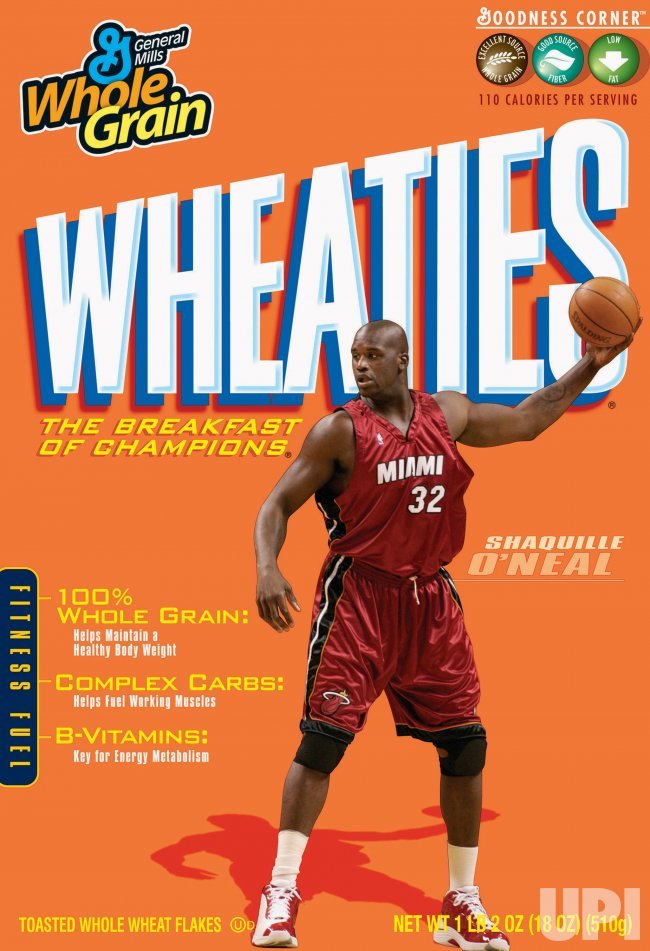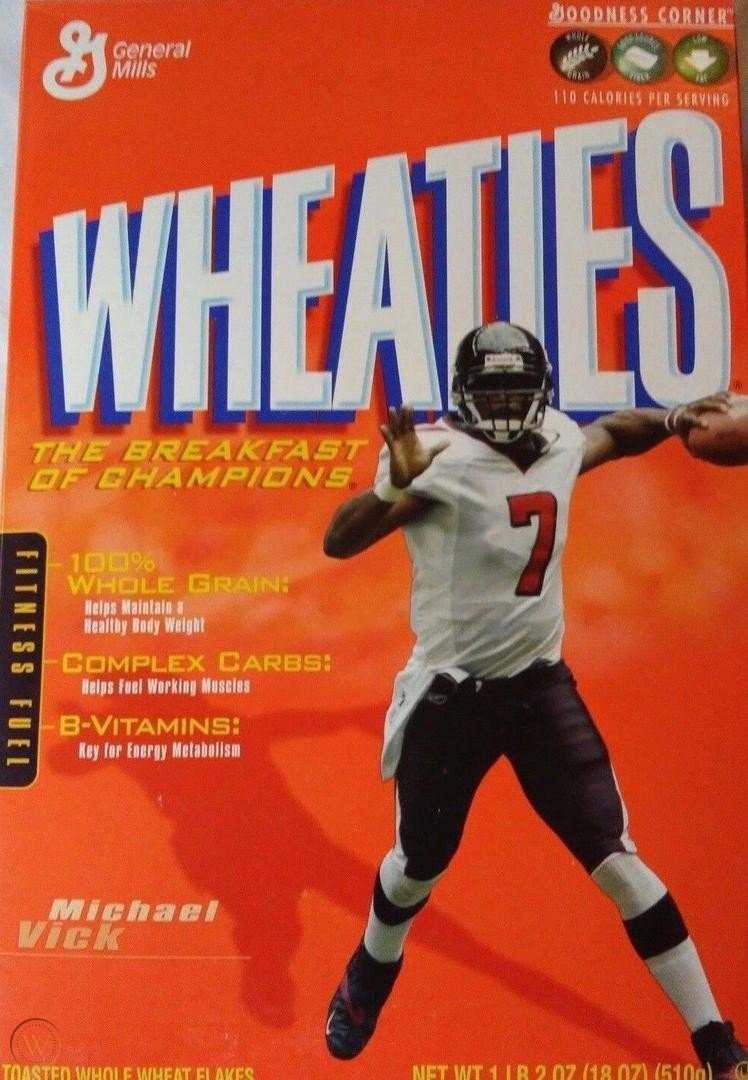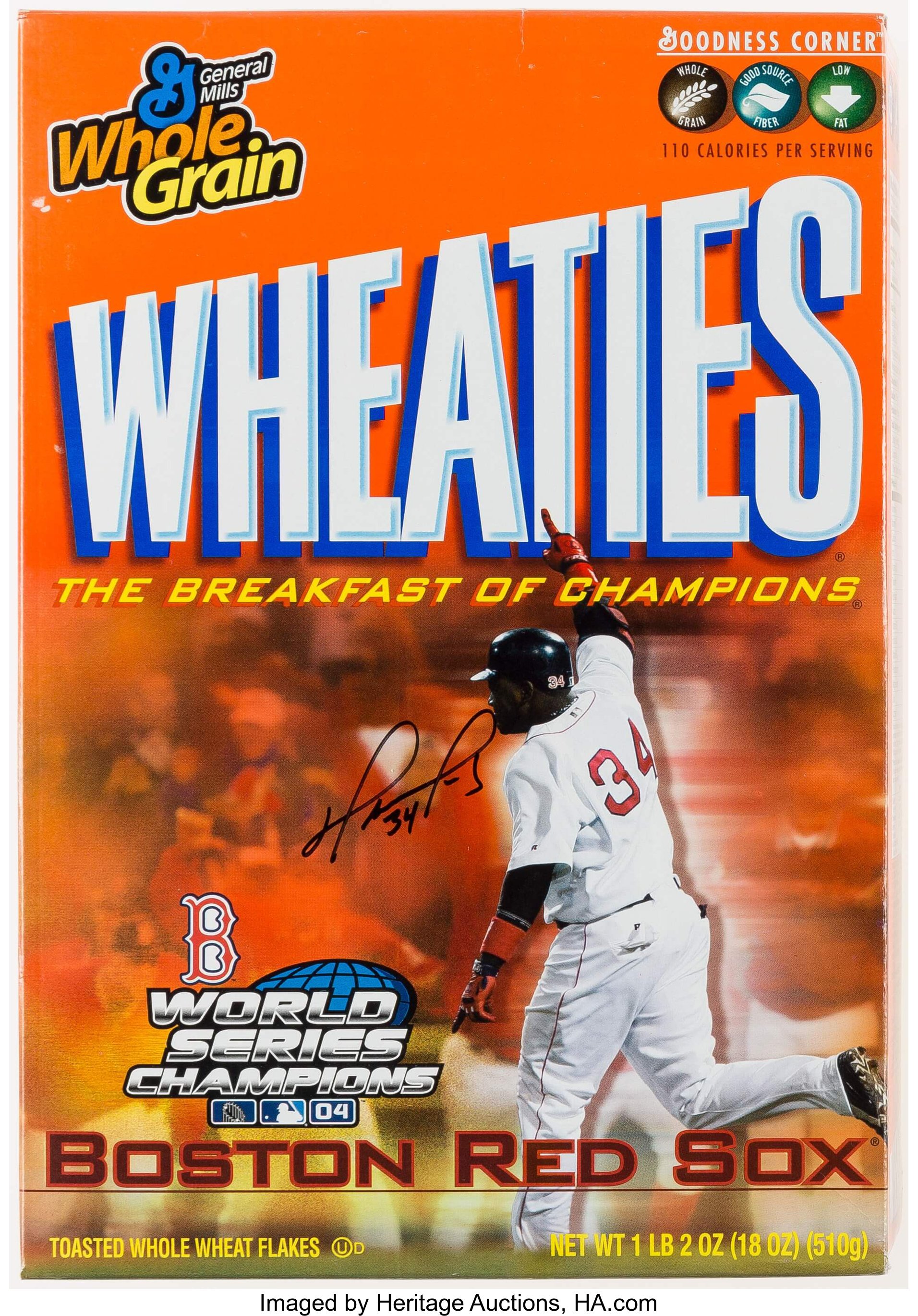Branding
Wheaties
revitalizing an iconic brand
Challenge
Revitalizing an iconic brand in a 25-year decline
Background
I can still remember the day I got my new brand assignment at General Mills. Working in brand marketing at a consumer packaged goods company, you get used to the process. You rotate from brand to brand, each with its own unique challenges, target audience, brand positioning, and budget. Whatever your new brand is, you are taught to follow the same process — immerse yourself in the data and research, meet and learn from the cross-functional team you will manage, and by all means, go to the grocery store and observe everything about your product in its native environment.
So all brands are good brands that brand marketers learn to love and to which they channel their voice. Truth be told, while we love all of our children, there is something a bit more special about certain brands. I was THRILLED at getting the Wheaties brand assignment. Wheaties was the first great American sports brand, pretty cool for a sports lover, and so iconic that it had its own amazing nickname — The Breakfast of Champions.
With a perpetual smile on my face, I dug into the data. It was ugly - very ugly. There was a heyday for Wheaties, but it was in the 1970s, and since that time, sales had declined consistently. Its taste profile was a poor fit for today’s consumers, but its dwindling audience was so loyal to the product it was difficult to make changes to it. Due to sales declines, Wheaties marketing budget was so small it hadn’t run a national TV campaign in years. Finally, while there were many fewer Wheaties consumers, the ones that remained were seemingly the same people who bought it in the 70s. The typical Wheaties consumer was 55+ (and the sweet spot was 65+). Upon first glance, the truth was as plain as a bran flake — one of the truly great American brands was dying.
What Wheaties has is a heritage second to none, extraordinary brand awareness, an audience of (sports) fans that went far beyond those that consumed the product, and a mystique among the greatest athletes in the world — being on a Wheaties box was a sign that you had finally made it.
But I had my work cut out for me. Time was not on my side, and with a small marketing budget, I still had to find a way to gain enough traction to prove to General Mills leadership that Wheaties was worth investing in.
Solution
An unanswered question from my first grocery store trip led me to a new strategy. Why did almost all of the Wheaties boxes I observed have pictures of bowls of cereal on the cover and not athletes?
Cheerios was (and still is) the #1 cereal brand at General Mills and in America. But you don’t see too many folks selling old yellow boxes as memorabilia on Ebay. If Wheaties boxes with athletes still had incredible cache, why didn’t we make more of them and with the most popular athletes?
While I didn’t have the budget to afford advertising, I didn’t have much trouble convincing the greatest (and highest paid) athletes in the world to be honored on the cover of a Wheaties box for a nominal fee including press events that drew broad media coverage. We even did crazy stunts — like my idea to have Pedro Martinez pull a string to unveil a 30-foot banner of his new Wheaties box on the Green Monster of Fenway Park before a Red Sox game (covered nationally on ESPN’s SportsCenter, of course).
While previously there were only a handful of Wheaties athlete boxes created each year, during my year and a half on the Wheaties brand, I launched over 20. These included some of the greatest athletes of all-time (Carl Lewis, Jackie Joyner-Kersey), the biggest athletes of the era (Peyton Manning, Shaq), and new Olympic champions (Michael Phelps, Carly Patterson).
The crowning jewel and our best selling box, was one that required my negotiating a deal on the fly with Major League Baseball. The economics of a deal with Major League Baseball did not work when I had initiated discussions with MLB. It required a positive ROI of incremental sales of Wheaties generated by the deal vs. its cost. However, one of the biggest sports stories in a generation changed the equation. Seizing the moment as the Red Sox completed their miraculous 2004 comeback against the Yankees, I reached an agreement with MLB contingent on the Red Sox capturing their first World Series in 86 years. I knew the economics puzzle would be solved by the moment – elated Red Sox fans would swoop these boxes off the shelves. We unveiled the Red Sox World Series Champions box featuring David Ortiz on the field immediately after the Sox clinched the Series.
If you live in New England or are visiting family, you are bound to see that box in a custom acrylic case displayed on the shelf of any true, die-hard Sox fan.
Results
The box strategy proved successful. As a result of the new strategy, Wheaties posted its first sales growth after years of decline.
Following the rollout of the Red Sox World Series box, I received word that Wheaties had been approved for its first national advertising campaign in years. I worked with our creative agency to develop the initial concept for the ad. It featured the audio of a legendary announcer’s play-by-play call of one of the most unlikely, World Series home runs in history. Given what we had accomplished, it seemed like an appropriate narrative for the brand.












